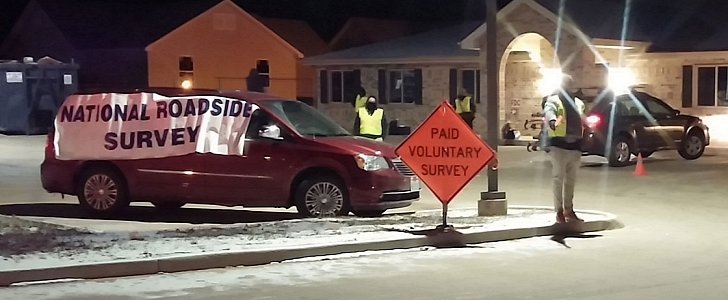When they use drugs within 24 hours of getting behind the wheel, drivers tend to try and hide it, a new study by the IIHS found, despite no penalty hanging over their heads.
The study conducted by the IIHS is based on the results of two older national roadside surveys, and its goal is to highlight the lack of proper data on drug-involved driving. Because no matter what you think, any type of drug, including some that are legal to use, can affect your skills.
According to the organization, a total of 21,000 drivers were surveyed in 2007, 2013, and 2014 at 300 locations across the U.S. The survey consisted in gathering biological and self-reported information about the use of cannabis, opioids, cocaine, antidepressants, and benzodiazepines (that’s Xanax and Valium).
The research found that fewer than 20 percent of drivers admitted to taking cocaine despite testing positive, about 60 percent lied about using marijuana and about the same when it comes to other opioids. 30 percent of the driver lied about taking antidepressants.
These results are worrying because the roadside surveys were anonymous, and the only penalty the drivers were facing was the police providing them with an alternative means of transportation. Drivers were also paid for their participation.
The IIHS cites such old studies because there aren’t any more recent ones. This type of survey has been conducted five times since 1973, but nothing tangible came of them: there’s no data on the prevalence of drug-involved driving, biological measures are not collected regularly, and linking drug use to fatal crashes is sketchy at best.
What’s more, says IIHS Senior Research Scientist Angela Eichelberger, the results are increasingly inconsistent from one survey year to another.
“These findings suggest that self-reported drug use is not a good measure for monitoring trends in drug use in this population,” she says.
As a result of these findings, the IIHS hints to the creation of evidence-based standards that could be used to establish impairment based on a drug test.
You can have a look at the findings of the study in the document attached below.
According to the organization, a total of 21,000 drivers were surveyed in 2007, 2013, and 2014 at 300 locations across the U.S. The survey consisted in gathering biological and self-reported information about the use of cannabis, opioids, cocaine, antidepressants, and benzodiazepines (that’s Xanax and Valium).
The research found that fewer than 20 percent of drivers admitted to taking cocaine despite testing positive, about 60 percent lied about using marijuana and about the same when it comes to other opioids. 30 percent of the driver lied about taking antidepressants.
These results are worrying because the roadside surveys were anonymous, and the only penalty the drivers were facing was the police providing them with an alternative means of transportation. Drivers were also paid for their participation.
The IIHS cites such old studies because there aren’t any more recent ones. This type of survey has been conducted five times since 1973, but nothing tangible came of them: there’s no data on the prevalence of drug-involved driving, biological measures are not collected regularly, and linking drug use to fatal crashes is sketchy at best.
What’s more, says IIHS Senior Research Scientist Angela Eichelberger, the results are increasingly inconsistent from one survey year to another.
“These findings suggest that self-reported drug use is not a good measure for monitoring trends in drug use in this population,” she says.
As a result of these findings, the IIHS hints to the creation of evidence-based standards that could be used to establish impairment based on a drug test.
You can have a look at the findings of the study in the document attached below.

